
Shopify Plus and Adobe Commerce (previously Magento Commerce) are two of the most widely used B2B ecommerce platforms, each offering a distinct approach to managing and scaling online operations. However, the question that many businesses continue to pose is: What is the difference between Shopify and Adobe Commerce?
This comparison guide breaks down the key aspects of the two platforms, enabling you to make an informed decision. If your team is unsure which platform will be most beneficial for supporting complex operations, this article will help you understand the difference between Magento and Shopify and determine which one fits your needs best.
TL;DR: Shopify vs. Adobe Commerce – Which is best for your business?
Shopify Plus is a cloud-based platform with built-in B2B capabilities, transparent pricing, and ease of use – best suited for businesses looking to achieve a speedy time-to-market, minimal IT overhead, seamless omnichannel integration, and a fully managed environment supporting both B2B and DTC sales. Adobe Commerce is a self-hosted or cloud-hosted ecommerce platform that is ideal for complex, highly customized B2B operations that demand extensive control, flexibility, and technical expertise.
Adobe Commerce vs. Shopify comparison: Key differences at a glance
| Aspect | Shopify | Adobe Commerce |
|---|---|---|
| Hosting | Cloud SaaS | Cloud or self-hosted |
| Setup | Fast launch | Slower, dev required |
| Customization | Limited / API-based | Full code access |
| Enterprise features | Built-in | Advanced |
| Scalability | Moderate | High |
| Omnichannel | Native | Via extensions |
| Support | 24/7, global | Enterprise / Dev team |
| Performance | Optimized | Needs optimization |
| Automation | Shopify Flow | Adobe Sensei / Custom |
| Integrations | Popular apps, ERP/CRM | ERP/CRM/PIM, highly custom |
| Security | PCI, fraud detection | Enterprise-grade |
| Pricing | Transparent subscription | Custom |
| Total Cost of Ownership (TCO) | Lower | Higher |
| Ideal business size | Mid-sized | Large |
| Technical requirement | Low | High |
Shopify overview
Shopify is a cloud-based ecommerce platform that allows businesses of all sizes to create, manage, and grow online stores. It offers a comprehensive SaaS solution that encompasses site building, payment processing, inventory management, shipping, and marketing. The enterprise-level Shopify Plus offers additional features for B2B operations, allowing merchants to utilize the same system for both wholesale and direct-to-consumer sales.
Adobe Commerce overview
Adobe Commerce (formerly Magento Commerce) is an ecommerce platform available in both cloud-hosted and self-hosted formats. It allows companies to develop, operate, and customize online stores, featuring product management, payment, and order delivery tools. Its architecture supports extensive B2B functionality and flexible integrations, enabling it to adapt to specific business needs.
Key considerations for B2B ecommerce
When evaluating Magento vs. Shopify Plus for B2B ecommerce, businesses need to take into account the following considerations:
The amount of time it takes to bring the platform to a stage where it provides a working storefront and measurable impact on business.
The platform's flexibility enables the adjustment of storefronts, workflows, and integrations to address industry-specific or customer-specific requirements.
Tools extend beyond retail ecommerce to aid in the complex buying cycles, negotiated pricing, and company-level account management.
Ability to expand as the business grows, including a system that supports an increase in product lines, user accounts, and global selling without slowing down.
Consistency across channels, achieved online, through sales representatives, and in physical stores, ensures that buyers have a consistent experience.
Access to 24/7 assistance and enterprise resources in case of problems.
A clear understanding of total investment involves licensing, infrastructure, custom ecommerce development, and long-term maintenance.
Whether the platform offers quick browsing, seamless search, and optimized checkout, especially for large and frequent orders.
Automation that ensures reduced manual effort and maintains order processing, approvals, and notifications running smoothly.
Whether the platform is well-integrated with ERP, CRM, accounting, and other systems.
High standards of compliance, fraud prevention, and data security to ensure regulatory and client expectations are fulfilled.
Shopify for B2B
In the Magento vs. Shopify comparison, Shopify addresses B2B requirements through its built-in solution available on Shopify Plus, with the following capabilities:
Shopify store setup. A merchant can set up a basic Shopify B2B store on Shopify Plus relatively easily through its intuitive admin interface, but advanced customization or integrations will typically need developer expertise.
Customization. Merchants can tailor storefront design, checkout experiences, and workflows using built-in tools and approved apps.
Enterprise features. Shopify contains company-specific catalogs, volume tier prices, customer-specific visibility, net terms, self-service portals, and wholesale checkout.
Scalability. It supports international selling with localized catalogs, multiple currencies, and customizable storefront themes.
Omnichannel and POS. A unified commerce stack integrates wholesale, online, and in-store sales, with a shared product catalog, centralized inventory, and unified order management.
Support. Merchants have 24/7 support worldwide and can access assistance via live chat, phone, and the Shopify Help Center.
Speed. Shopify Plus offers optimized site performance and global CDN delivery out of the box, ensuring fast page loads and reliable storefront performance across regions.
Automation and workflows. Shopify Flow enables merchants to create drag-and-drop automation for actions such as order alerts, customer segmentation, credit checks, and more.
Integration. Shopify is integrated with popular ERP systems and accounting applications such as QuickBooks and has powerful APIs to support headless and custom integrations.
Security and compliance. Shopify offers PCI compliance, VAT handling in many regions, and supports fraud detection.
Adobe Commerce for B2B
When comparing Adobe Commerce vs. Shopify, Adobe Commerce tackles these challenges through the following B2B capabilities:
Setup. Adobe Commerce allows businesses to configure highly tailored B2B stores, supporting multiple websites, storefronts, and company-specific settings.
Customization. It offers businesses the opportunity to customize all storefronts, workflows, and integrations, thereby creating unique and specific use cases.
Enterprise features. Adobe Commerce provides such sophisticated functions as hierarchical company accounts, role-based access, quote and requisition lists, contract pricing, pay-on-account, and approval workflows.
Scalability. It is configured to meet large-scale operations with a high volume of transactions, multi-warehouse inventory, and global ecommerce strategies.
Omnichannel and POS. Although it supports omnichannel functionality, it usually relies on third-party extensions and integrations to unify sales and inventory data.
Support. Enterprise-level support includes specific technical resources, but additional third-party development services are also used by a large number of companies.
Speed. With proper optimization, Adobe Commerce delivers fast and reliable performance, even for complex, high-traffic B2B sites. Businesses can leverage caching, CDN, and other performance-enhancing tools to ensure smooth customer experiences..
Automation and workflows. Adobe Commerce provides the ability to automate complex processes and leverage Adobe Sensei’s AI capabilities to enhance personalization and productivity.
Integration. It supports integration with ERP, CRM, PIM, and other enterprise platforms, and can be tailored to fit a company’s specific corporate infrastructure.
Security and compliance. It provides high-level security and compliance options that align with enterprise requirements.
Adobe Commerce vs. Shopify Plus for B2B. Pricing and Total Cost of Ownership
In the Shopify Plus vs. Adobe Commerce comparison, cost plays a key role, not only in the initial subscription fee but also in the total cost of ownership (TCO), which encompasses hosting, infrastructure, integrations, maintenance, and continuous development.
Shopify pricing for B2B
Shopify’s B2B capabilities are available exclusively through the Shopify Plus plan. It includes native features designed for selling to businesses. These tools allow merchants to manage a hybrid B2B/D2C store or a dedicated B2B store, with all B2B functionality included as part of the Plus plan subscription.
Shopify Plus starts at $2,300 per month on a three-year term. At this tier, access is available to a wide range of services, including support for up to 200 inventory locations, priority 24/7 phone support, localized market-based storefronts, unlimited staff accounts, a customizable checkout experience, and up to 200 POS Pro locations. Read more about the Plus plan in our detailed guide to Shopify plans and pricing overview.
Since Shopify is a fully hosted SaaS service, infrastructure, security, hosting, and automatic upgrades are already included in the price, reducing the burden for IT teams. Third-party apps or integrations are optional and incur additional costs as your business expands.
Adobe Commerce pricing for B2B
When comparing Shopify Plus vs. Magento, keep in mind that Adobe Commerce pricing is not publicly listed, as it is determined through a custom, quote-based system. The ultimate price is based on several factors, including Gross Merchandise Value (GMV), Average Order Value (AOV), chosen deployment model, and the specific features required.
The deployment models are:
Adobe Commerce Cloud Service (SaaS) – multi-tenant service with automatic feature and security updates.
Adobe Commerce on Cloud (PaaS) – single-tenant, dedication to cloud infrastructure, and the highest level of control and scalability.
Adobe Commerce Optimizer – a storefront, catalog, and merchandising platform that is capable of integration with an existing transaction engine.
In the case of B2B, Adobe Commerce comes with a comprehensive set of features, including company accounts, quoting, requisition lists, and advanced merchandising.
Nonetheless, numerous features, including personalization, experimentation, analytics, and order manageability, are available as add-ons only. Moreover, there is a likelihood of increased development and maintenance costs with Adobe Commerce, as business organizations usually require technical staff or agency partners to set up, customize, and continuously operate the platform.
Shopify vs. Magento: Total Cost of Ownership
Shopify. Reduced and predictable TCO due to all-in-one subscription, hosting provided, and low IT overhead.
Adobe Commerce. More expensive TCO as a result of custom pricing, add-ons, infrastructure options (SaaS vs PaaS), and continuous development requirements.
Shopify vs. Adobe Commerce - Pros and Cons
Shopify and Adobe Commerce are both robust ecommerce platforms, each with its advantages and disadvantages. Here’s a quick look at their pros and cons.
Shopify
Pros:
Easy, user-friendly installation and management
Built-in hosting, security, and core features
Vast app ecosystem
24/7 customer support
Cons:
Limited customization
Higher-than-average transaction fees
Challenges with deep integrations and multi-store setups
Adobe Commerce
Pros:
Support for large product catalogs and heavy traffic
Open-source flexibility for custom solutions
Strong integrations with Adobe Experience Cloud and third-party tools
Advanced features, including built-in tools for B2B, bulk orders, and multi-store
Cons:
Requirement for skilled developers to run and maintain
High costs for licensing, hosting, and customization
Limited customer support
Which should you choose – Adobe Commerce vs. Shopify?
So, which is better – Shopify or Magento? Let’s look at the types of businesses each platform works best for and the main reasons why you might choose one over the other.
Shopify
Best for: Mid-sized companies, growing organizations that emphasize speed to market, merchants operating a B2B and direct-to-consumer (DTC) business, and any companies wishing to avoid excessive technical complexity.
Choose Shopify if:
Your business requires a fast and simple launch with minimal development overhead.
You want a completely hosted platform that has a lower cost of ownership and transparent subscription pricing.
You have a strategic priority to manage both wholesale B2B and DTC sales using one platform.
The ease of use, user-friendly dashboards, and 24/7 worldwide customer care are key success factors for your team.
Built-in omnichannel features, such as integrated POS and single-stock inventory, are crucial to your business's daily operations.
Reliability, speed, and scalability during peak traffic events, such as seasonal promotions, are essential.
You appreciate utilizing Shopify’s vast marketplace of apps and an API-rich platform, allowing you to expand capabilities without having to rebuild from scratch.
Beginner and mid-market businesses looking for a quick time to market.
Organizations seeking a hosted solution that is fully managed and requires minimal infrastructure responsibility.
Adobe Commerce
Best for: Large organizations, companies that handle complex multinational operations, those with sophisticated B2B processes, and companies that have in-house or outsourced technical capabilities.
Choose Adobe Commerce if:
You need full access to all levels of your ecommerce site, including sophisticated backend and frontend customization.
There is a requirement for enterprise-grade B2B capabilities that include a hierarchical business organization, sophisticated quoting workflows, contract-based pricing, and approval processes.
Your business spans plenty of countries and regions and needs superior multi-store management, localization, and multi-currency support.
The company has a dedicated development team or agency partners who can manage longer implementation cycles and ongoing custom development.
Connecting with ERP, CRM, PIM, and other enterprise-level systems is mission-critical and must be customized to your infrastructure.
Your business processes high volumes of transactions, features extensive product catalogs, and requires a high level of scalability.
Your company's strategic focus is advanced content management, marketing automation, and AI-powered personalization.
Your organization has a large budget and technical resources, and is willing to invest in platform maintenance and innovation.
If your business requires complex workflows, scalability, and deep enterprise-level integration.
Magento or Shopify: Key takeaways
Ultimately, the decision between Magento and Shopify depends on your business size, technical capabilities, and B2B requirements. Shopify Plus offers a streamlined, cost-predictable, and omnichannel-specific environment that is effective for both B2B and DTC businesses. Adobe Commerce, in turn, shines in situations where the company requires sophisticated workflows, extensive customizations, and complex system integrations.
This Magento vs. Shopify comparison guide shows that there is no single “best” option, as it depends on what your business needs most. If you’re still unsure which platform is the right fit, contact DigitalSuits’ experts for professional guidance. If you are ready to start with Shopify, we offer expert Shopify B2B development services to integrate B2B workflows, automate processes, and make your store ready for large-scale clients.
Frequently Asked Questions
Does Adobe Commerce offer AI-powered features for B2B?
Yes, Adobe Commerce utilizes Adobe Sensei AI to offer personalized product suggestions, intelligent search features, and dynamic pricing models that enhance the B2B customer experience.
Is it possible to use Shopify in a headless commerce setup?
Yes, headless architecture is fully supported in Shopify, with powerful APIs and dedicated project frameworks such as Hydrogen and Oxygen, which provide developers with the freedom to build their own frontend experiences.
How do Shopify and Adobe Commerce handle product catalog complexity?
Shopify is well-equipped to handle mid-sized product catalogs with simple inventory requirements. In contrast, Adobe Commerce is better suited for extensive and complex catalogs with more sophisticated features, such as multi-warehouse and multi-source inventory management.
Which platform offers better omnichannel capabilities for B2B?
Shopify offers native omnichannel features, including integrated point-of-sale (POS) systems. In contrast, Adobe Commerce typically requires extensions and third-party integrations to offer POS capabilities.































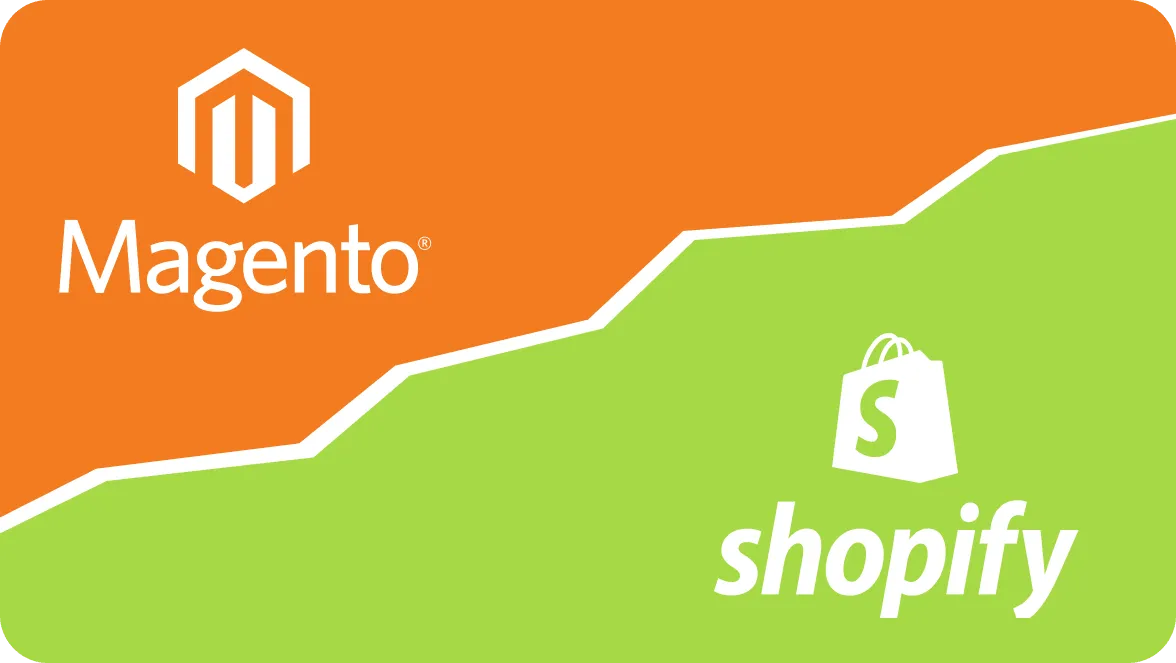
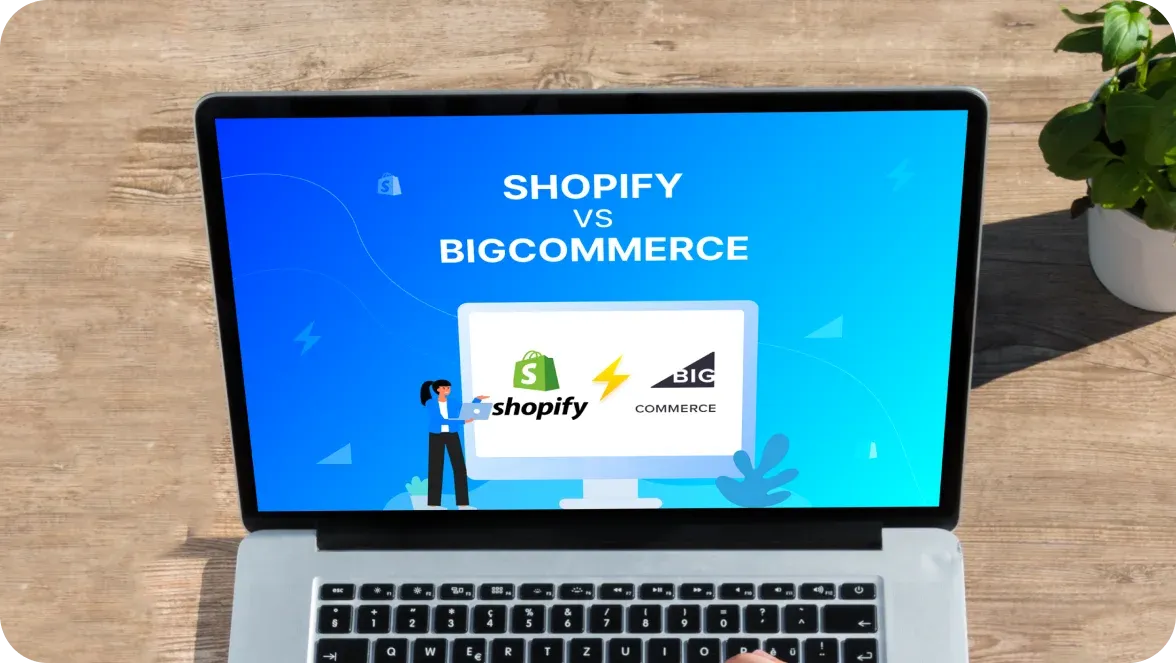

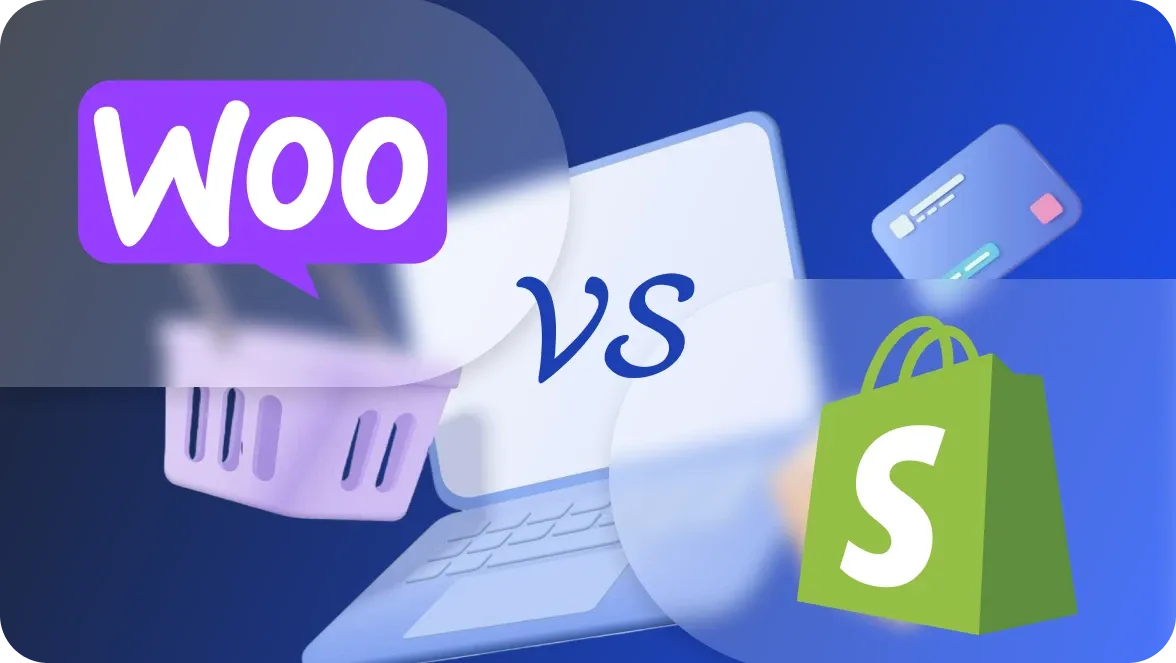


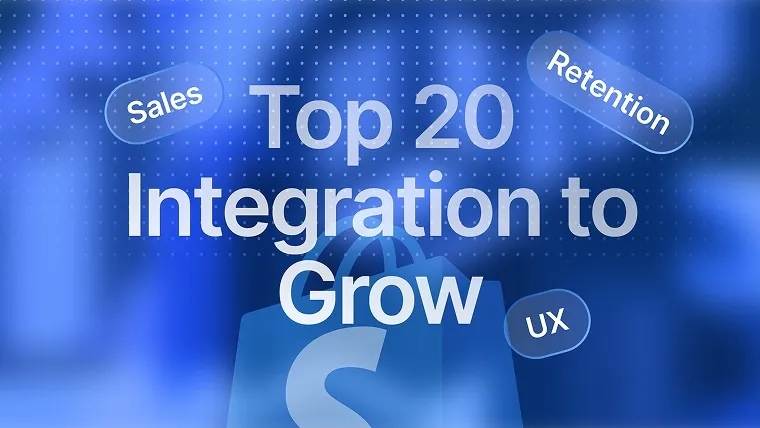

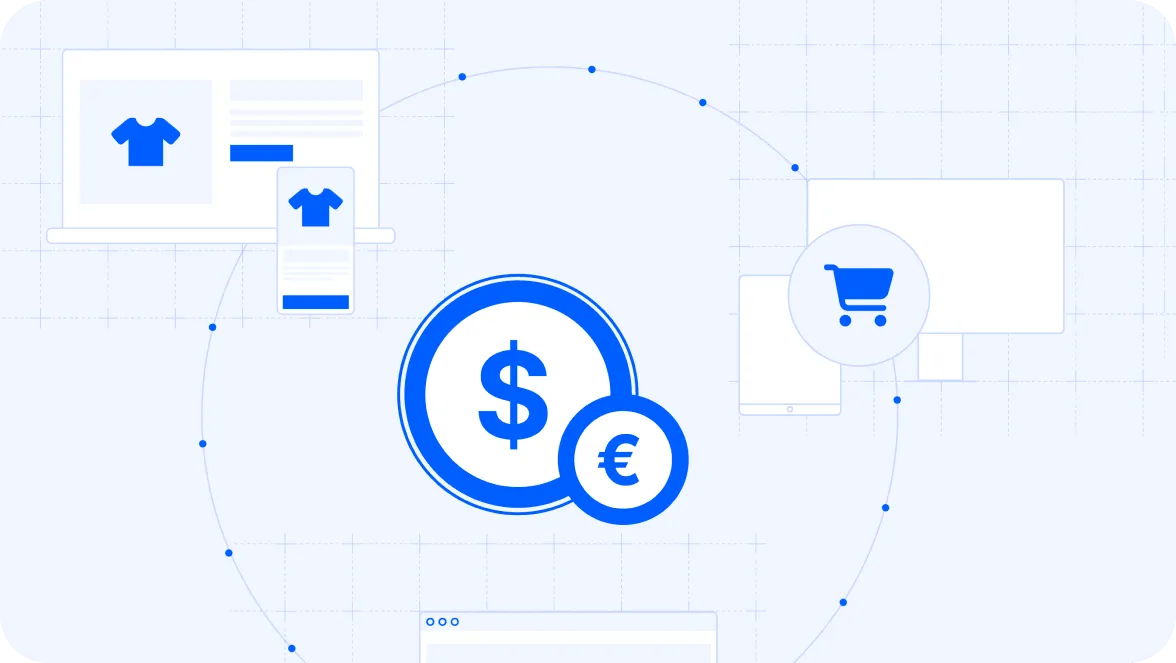
Was this helpful?
0
No comments yet